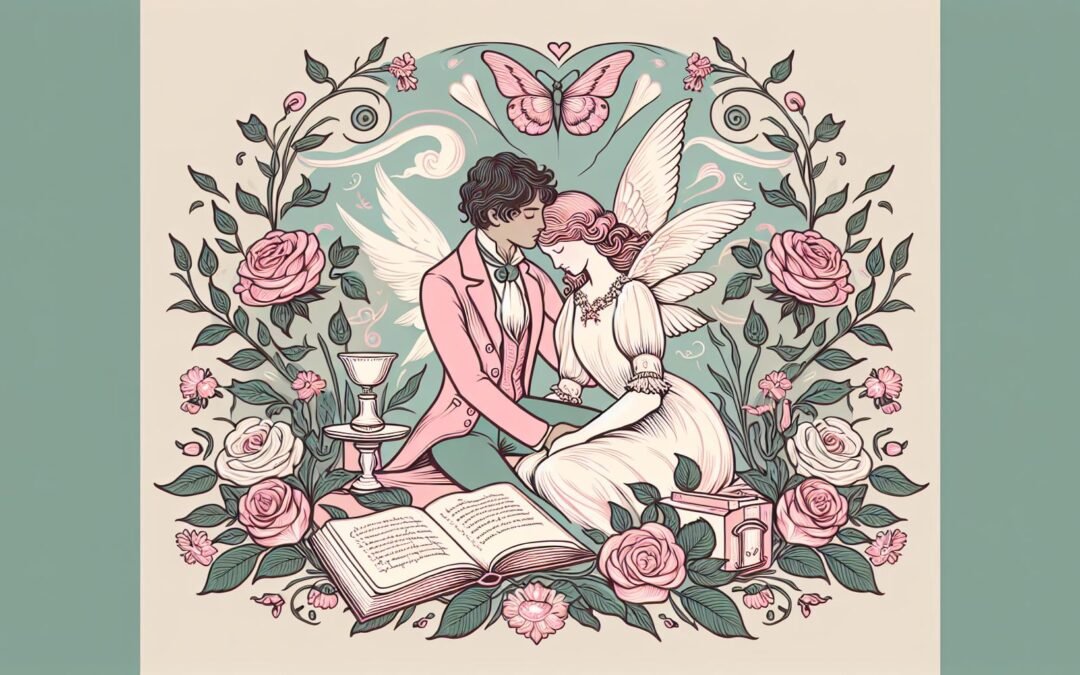Love poems for girlfriend reflect the centuries-long relationship between language and desire, shaped by cultural, emotional, and literary forces. The archives of world poetry bristle with songs and verses about connection and separation, charting the pulse of affection as social realities transform. Readers continue to search for meaning, comfort, and originality in these poems, turning to sources as varied as ancient epics and contemporary confessions for inspiration.
Historical Context and Evolution of Love Poems for Girlfriend
Even the earliest written records, from Sumerian cuneiform to papyrus scrolls, document love. The “Gita Govinda” entwines romance with spirituality and raises lovers to divine status. Tang dynasty poets in China invoke the moon as witness and conduit. Cultures transformed the unspoken into melody and meter, lending lovers a platform for passion through oral epics and manuscript scrolls. Over time, love poetry has journeyed from hieratic symbolism to unguarded intimacy, shaped by shifting societies and personal voices.
Key Movements Across Time and Geography
Medieval European poets celebrated courtly affection centered around unattainable figures. Petrarch popularized the sonnet, using intricate structure and rhetorical turns to express longing. Persian Sufi poets wrote ghazals about separation and divine union. Writers like Rumi and Hafez merged carnal and spiritual yearning, blurring boundaries between bodily and metaphysical desire. Elizabethan England witnessed a democratization of the love lyric: Shakespeare, Sidney, and Donne introduced wit, philosophical musing, and crafted conceits that channeled delight and anguish. Anthologies highlight how forms and motifs passed between continents, languages, and traditions.
Changing Tones, Forms, and Social Attitudes
As social structures shifted and literacy widened, the rhythm and tone of love’s expression changed. Early romantic verse emphasized unattainability and abstraction. Pastoral innocence yielded to urban complexity. Romantic poets focused on turbulent emotions and personal authenticity, while modernism broke expected forms and explored psychological fragmentation. Confessional poetry blurred autobiography and fiction, using enjambment and rhythmic irregularity to reflect desire’s unpredictability.
Rising Personal Voice and Directness
Contemporary love poetry values unfiltered experience and direct address to the beloved. Formal allegory recedes in favor of open intimacy, mirroring new norms. Frank O’Hara and Eileen Myles channel conversation, texting, and street vernacular. The modern love poem privileges immediate detail and specificity, revealing private moments with candor and wit. On many platforms, readers search for poems for girlfriend that convey sincerity and presence.
Thematic Motifs and Emotional Currents
Writers tap a wide range of subjects in love poems for girlfriend, creating resonance through specificity and music. Literary trends and changing expectations have shaped how poets pursue questions of beauty, longing, loyalty, and devotion.
Beauty, Virtue, and Individuality
The beloved’s presence inspires poets, who describe physical details and character traits to move beyond idealization. Generosity emerges in attentive listening or encouragement. Resilience is shown by efforts toward midnight ambitions. Beauty appears as both physical and inner essence. Contemporary love poems avoid clichés by portraying freckles, laughter, and the nuanced rhythms of intimacy.
Longing, Absence, and Anticipation
Separation sparks lyric invention, transforming ordinary spaces into landscapes of yearning. Beds turn cold, messages remain unopened, and seasons stretch with anticipation. Poets evoke longing through shifts in line length and abrupt fragments. Missed calls and digital traces become modern symbols of distance, echoing earlier motifs found in rhyming poetry about absent lovers.
Devotion and Emotional Risk
Poets still declare loyalty, but new poetry explores the tension between steadfastness and fragility. Writers focus on how devotion endures misunderstandings, personal shortcomings, and vulnerable moments. Risk becomes essential rather than staged. Poems express honesty, admitting failures and celebrating the courage to remain open.
Playfulness transforms affection into a game of language. Writers use inside jokes, emoji, and wordplay. Levity provides oxygen for relationships, allowing intimacy to breathe. Pop culture and shared experience replace traditional stiffness with mutual creativity. Laughter and double meanings sustain connection, turning each reference into a thread between partners.
Empowerment, Admiration, and Reciprocity
Modern love poems accentuate mutual growth and respect. The girlfriend emerges as a catalyst for creativity and self-discovery, not a passive recipient of praise. Autonomy stands beside admiration—the beloved is a creator, an intellectual peer, an equal. Empowerment blends individual aspiration with shared ambition. The poetic address becomes a reflection of identity and transformation.
Conflict, Reconciliation, and Growth
Love poetry acknowledges difficulties and repairs. Apologies, forgiveness, and mutual understanding become central to the narrative. Poems record disagreements alongside moments of reconnection, mapping how trust develops. Writers break couplets with clipped words to mirror emotional turbulence. Rhythm and syntax bend under pressure, giving form to vulnerability and healing.
Symbols, Motifs, and Cosmic References
Symbols are portals and codes. Flowers, no longer bound by their historical meanings, communicate kinds of intimacy: lavender suggests gentle resilience, a cactus bloom signals unexpected endurance. Moon, planets, and shooting stars surface repeatedly within the genre, but repeated themes are avoided through unique framing. Eclipses, comets, and seasonal change express impermanence, awe, and cycles of closeness. References to Sappho, Frank Ocean, and mythic figures such as Orpheus act as homage as well as invitation to shared meaning.
Lexical, Stylistic, and Musical Features in Love Poems for Girlfriend
Innovative language and form define the best love poems for girlfriend. Poets invent new metaphors, experiment with sound, and draw on older traditions to capture intimacy’s shifting variables. A successful love poem balances surprise with emotional authenticity.
Metaphor, Simile, and Sensory Imagery
Poets use metaphors to describe affection in new ways. A girlfriend’s absence becomes a silent night without satellites; a kiss transforms into city lights blinking on below a wing. Simile moves past cliché, as in “your memory breaking me apart like moonlight in a cut glass of a subway window.” Powerful imagery conveys the tension in an unfinished sentence or the subtle significance of a glance.
Alliteration, Assonance, and Sound
Sound patterns build sonic memory. Alliteration links words, granting music and forward pace. Assonance in vowels heightens the sense of yearning, while consonance supplies closure and rhythm. Lines like “Softly she sings, sugared sunlight streaming” echo both image and sound, deepening the poem’s atmosphere.
Diction and Register: From Archaic to Modern
The diction of love poems for girlfriend is a register of intimacy, memory, and rebellion. Poets may use the grandeur of myth, the precision of scientific language, or the immediacy of colloquial speech. Words like “thou” and “fairest” can signal irony, respect, or play. Emoji, abbreviations, and subculture references create a sense of shared moment. Choices in vocabulary reflect the relationship’s boundaries and possibilities. Further resources on diction and poetic heritage can be found at Academy of American Poets.
Rhythm, Meter, and Musicality
Meter builds structure, while free verse fragments tradition. Classical patterns introduce patience and anticipation. Free verse invites surprise with sudden changes and offbeat pauses. Poets use enjambment, irregular meter, and slanted rhyme schemes to echo emotional twists. Subverting rhythm with abrupt monosyllables may mirror conflict or longing.
Intertextuality and Allusion
Love poems for girlfriend borrow and adapt from across culture. Poets incorporate film quotes, pop lyrics, memes, and overheard phrases. Reference points include Sappho, Frank Ocean, and Orpheus among mythic figures. Allusion adds texture and provokes new connections for readers. Deeper examination of modern references appears on Literary Hub.
Structural and Stylistic Experimentation
Forms range from structured sonnets to collage-like free verse. Lineation may reflect conversation, hesitation, or overwhelming emotion. Caesura slows the pace, refrains build anticipation, and unexpected rhyme shakes up expectation. The variety of form matches the complexity of modern relationships.
Internal and External Sources
Love poems for girlfriend are shaped by inheritance and originality. Writers revisit canonical traditions while embracing new possibilities. Poems written today converse with those of Neruda, Keats, and others who mapped the territory of desire, memory, and transformation. New work continues to expand what love poetry means for those in search of connection.

